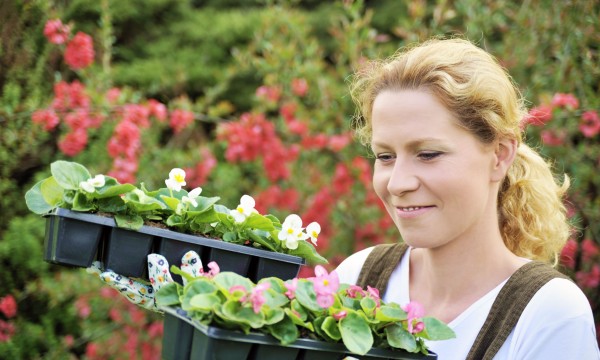Your cart is currently empty!

Potting Plants Tips

Potted plants can be a great way to add color, interest and greenery to any space. But they can be tricky if you don’t know how to care for them properly.
If you want your houseplants to thrive, you need to follow a few simple tips. These will ensure you’re repotting your plants correctly and they’ll stay healthy and beautiful!
1. Choose the Right Pot
Choosing the right pot is one of the most important things you can do for your plant. A pot with the right size and available drainage will make potting and watering much easier on your plant.
If you’re unsure about what type of pot to choose, start by thinking about the look and feel you want your plant to have. Ceramic pots come in all sorts of shapes, sizes and colors. Terra cotta pots are heavier and more porous, making them a good choice for cacti, succulents and other plants that like well-aerated soil.
When it comes to planter size, it’s best to stay within the recommended range for the plant you’re repotting. Too-large pots can be difficult to keep clean and cause the potting soil to dry out too quickly, allowing root rot to set in.
2. Check for Drainage Holes
Drainage holes are critical to the health of a plant. If the water in the soil is not allowed to drain away, it can rot the roots of your plant.
Potted plants with no drainage holes may have to be under-watered or over-watered to get enough moisture. Overwatering can lead to a number of problems, including yellow leaves, mushy stems and slow growth.
Luckily, there are some things you can do to give your plants the best chance of surviving in a pot without drainage holes. Most potted plants, especially cacti and succulents, can do quite well in a non-drainage pot as long as they are only watered very lightly and their soil stays dry in between waterings.
3. Choose the Right Soil
When potting plants, it’s important to choose the right soil. Not only does the type of soil you use affect how the plant grows, but it also affects how much water the plant can absorb and retain.
The best potting soil is light and fluffy, but doesn’t become too dense after it absorbs moisture. This will prevent the roots of your plant from getting smothered and susceptible to disease or rot.
A potting soil that contains perlite or vermiculite is another good choice, as they provide air spaces and allow water to drain away from the roots. This will reduce the amount of time it takes for water to reach the bottom of your pot.
The type of potting soil you choose depends on what kind of plants you want to grow and where they’re located. For example, a lighter soil is suitable for plants in shade, while plants in full sun require a heavier soil that can hold more water.
4. Make Sure Your Plant Gets the Right Light
Most indoor plants require a specific amount of light to thrive. The right kind of sunlight enables them to photosynthesize, creating the sugars they need for growth.
There are three standard levels of light that a plant needs to grow properly: bright, medium and low. Knowing how each plant responds to different lighting conditions will help you choose the right plants for your space.
Bright or direct light – This is when your plant has access to sunlight without any barriers in between, like blinds or curtains. Some sun-worshipping houseplants, such as cacti and succulents, love this level of direct sunlight.
Indirect or filtered sunlight is when your plant receives light that’s diffused by sheer curtains, a tree outside the window, or another indoor plant in front. This light isn’t as intense as direct sunlight, but it is still plenty bright for most houseplants.
by
Tags: